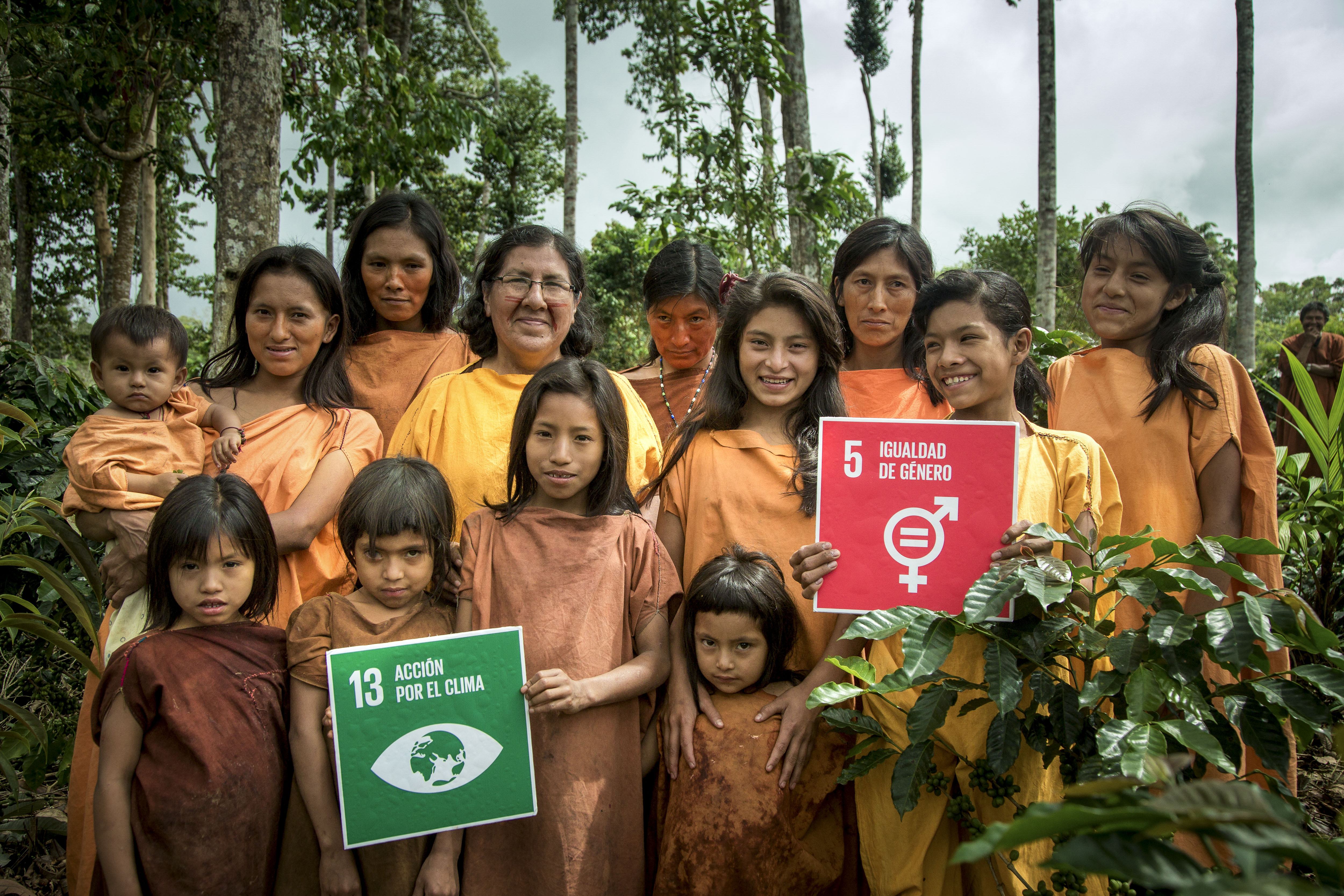In a world where climate-related disasters are increasing, empowering women to lead climate action must be our top priority.
What if unleashing the power of women is the path to climate resilience?
November 10, 2022

Esperanza Dionisio and members of the Pangoa Cooperative in Peru. As manager of the Cooperative for over 20 years, Esperanza works to promote women’s empowerment and the sustainable production of coffee.
This What If…? is the first instalment of an exploratory series released for COP27 as a collaboration between UNDP Crisis Bureau and the Regional Bureau for Asia Pacific Horizon Scanning Initiative. The series places a spotlight on the signals of early signs of change in our climate and disaster futures, offering insights into our horizon scanning report: Anticipating Risks and Uncertainties for Asia and the Pacific.
By Beth Allen, Disaster Risk Reduction Team for Building Resilience at UNDP Geneva.
When disasters strike, they are not gender neutral. Women and children are up to 14 times more likely to die in disasters than men, and we are seeing increasing evidence of a link between the climate crisis and girls being forced into child marriage and exploitation.
Yet despite these increased risks and vulnerabilities, women are often underrepresented in climate action. As we see increases in the frequency and intensity of climate-related disasters, this underrepresentation can lead to a worsening of the marginalization women already face.
Leading the way to climate resilience
Women like Shorena Chapurishvili and Jennys Jiménez are already leading the way in building flood-resilient communities.
Shorena Chapurishvili’s local community in the small Georgian town of Akhmeta has been impacted by more frequent and severe flooding over the years. With the support of a UNDP grant, Shorena has established a community-based rapid response squad to inform people of how to stay safe before, during, and after a flood.
“Women and youth can play a game-changing role. They form a public opinion, influence their families and are very effective in spreading the message”Shorena Chapurishvili.
Local climate activist Shorena Chapurishvili works alongside women and young people to make their communities more resilient to flooding | Photo: Anka Gujabidze/UNDP
In Colombia, after flooding devastated communities across the Mojana region, Jennys Jiménez and a team of local women mobilised to restore 900 hectares of wetlands, reducing flood risk in the area and making their communities more resilient to the impacts of climate change in the future.
In a UNDP supported project, women monitor the progress of one of 5,200 fruit and timber trees which were planted to reduce the impacts of flooding. | Left: Angely Castaño, Right: UNPD Colombia/Nadia Re
Projects like these show the vital role women are already playing in increasing climate resilience in their communities. But what will the future hold for women-led climate action?
Scanning the path ahead
In our Horizon Scanning Initiative, UNDP practitioners from across Asia and the Pacific mobilised to look for signals of change in the future.
Through this horizon scan, we detected a wealth of opportunities for more women-led climate action in the future. One such example is the record-setting growth that has been seen in the clean energy sector, a sector where women like Basma and Iman (below) are already leading the way for solar power.
First photo: Basma, an engineer and mother of two girls, leads an important division in the Jordan Renewable Energy & Energy Efficiency Fund. |UNDP Jordan
Second photo: Iman and her team of ten women who installed a solar power plant to provide clean energy for their community in Yemen. |UNDP Yemen
However, our signals have shown path to climate resilience will not be without challenges.
Dedicated policies and training will be needed to enhance the participation of women like Basma and Iman in the clean energy sector. Signals also show that society is becoming increasingly digitally connected and, although the gender digital divide is closing, women in developing countries are still less likely to be digitally connected than men. Looking forward, this can bring barriers to women accessing training and employment in the clean energy sector.
Looking further ahead, signals note that the care burden is growing and will restrict women and girls’ access to education and employment. Women and girls are already spending up to 11 hours a day on unpaid care and domestic work. The growing burden of care can threaten women’s capacity to lead climate-action projects like those championed by Shorena and Jennys.
These challenges and more are explored at length in our forthcoming horizon scanning report ‘Anticipating Risks and Uncertainties for Asia and the Pacific’.
Action for the future
At COP27, we must look ahead to a future where it is the leadership and empowerment of women that creates a path to climate resilience. This must come hand-in-hand with tackling existing gender inequalities and eliminating the future barriers women will face as we look forward. As spoken by UN Secretary-General António Guterres at this years’ Commission on the Status of Women:
“To forge the sustainable future we need, women and girls must be front and centre, leading the way”.

 Locations
Locations



